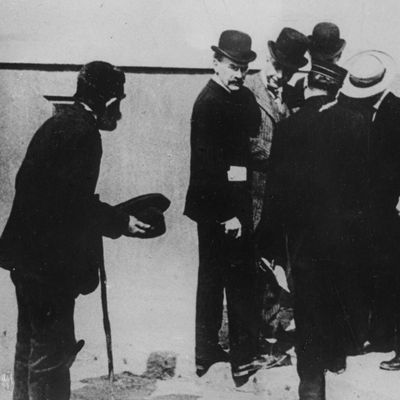
A great deal of research has shown that having a lot of money may be a risk factor for, well, being a jerk. Studies have shown that wealthy people are more likely to cheat in games and take candy that’s been set aside for children, less likely to stop at crosswalks, and less likely to exhibit physical signs of feeling compassion when looking at pictures of kids with cancer.
Now researchers using custom-designed computer games have uncovered a hint about what may cause rich people to behave so badly. It may be less about simply having more wealth than those people around you — the visibility of that wealth may be a factor, too.
In a series of experiments published in Nature, a team of Yale researchers led by sociologist Nicholas Christakis found that, within a simulation, inequality thrived when wealth was made apparent. When people could see that they had more money than others, the effect was poisonous: The rich began to take advantage of the poor. Within the simulations, people with higher relative wealth “behaved in a fashion that was sufficiently un-altruistic that it harmed the society they were in,” said Christiakis.
Christakis and his team used software called Breadboard to run experiments online, creating “temporary miniature societies” of about 17 people each. The participants, recruited from around the world, participated in games lasting about half an hour. Each received an initial allotment of resources and then were able to make connections, cooperate, and interact to increase or decrease their wealth.
In the games, each player was initially linked to about five neighbors. During each of the ten rounds of game play, players could choose to either “cooperate” by giving 50 units of wealth away and have each of their neighbors receive 100 units, reducing their own hoard of wealth but increasing the total amount of it in the game world, or “defect” — hold on to their money and simply collect whatever their neighbors chose to give to them that round.
At the end of each round, some participants had the option to break ties with neighbors or form new ties. When making this decision, people could see whether existing and potential neighbors had cooperated or defected in the previous round. The network of people thus rewired itself over the course of the game as people chose to create more connections or to isolate themselves in response to others’ actions.
When creating the societies, researchers manipulated two variables: inequality and visibility of wealth. In some societies, everyone started with the same level of wealth; other societies had rich people and poorer people. In some societies, no one knew how much money their neighbors had; in others people could see exactly how much wealth their neighbors — the people they were immediately connected to — had accumulated.
The researchers found that societies that started out with high inequality and visible wealth ended up more unequal than those in which wealth was invisible. The wealthy acted to consolidate their riches, and social connections and overall cooperation were lower. In societies in which financial status was concealed, however, people cooperated more and more often chose to connect rather than sever ties with their neighbors. Even in societies that started out unequal, if relative wealth was concealed, inequality at the end of the game was not as bad as when it was visible.
“The visibility of wealth was very important, much more important than the inequality,” Christakis said. ”In the unequal world, visibility results in a kind of exploitation scenario, where the poor give to their neighbors and the rich do not.” Each society experienced overall economic growth as people chose to cooperate and introduce more units of wealth into their world, increasing the average wealth of study participants. But the researchers were surprised to find that inequality on its own was not an obstacle to this economic growth — again, it was visibility that made the difference, and wealth grew more when it was invisible.
Interestingly, inequality decreased most in societies that started out unequal but in which wealth was hidden. The rich tended to be more generous and less exploitative when wealth was concealed. It’s unclear exactly why this happened. More research is needed to learn what motivated study participants to behave the way they did — why, for example, poorer people continued to give money away by cooperating, even when they could see that wealthier people were not returning the favor.
Among the generalizations that can be drawn, however, is that wealth visibility acts as a stabilizing force, Christakis said. Societies with visible wealth tended to have fewer connections and less cooperation, factors that both limited economic growth and helped to maintain the level of inequality that existed at the outset of the game. When wealth was visible in a world that started out equal, for example, that society tended to stay relatively equal.
Christakis said it’s important not to overgeneralize from a single study. But, he said, the research suggests that, if people want to live in a less-unequal world — and surveys show that most people do — the best course of action might be to make wealth invisible, even as he acknowledged that that’s an “insane” policy prescription.
Christakis said he’s interested in adding another variable into the experiment: allowing participants to choose whether to display their wealth or not. Introducing that change could yield some interesting insights, as could some cross-cultural comparisons. Would game participants in egalitarian Norway conceal their cash? Would players in unequal America brag about their bucks? In other words: How would the game’s results map out in the real world? It’s a question that can only be answered by simulating more societies.




